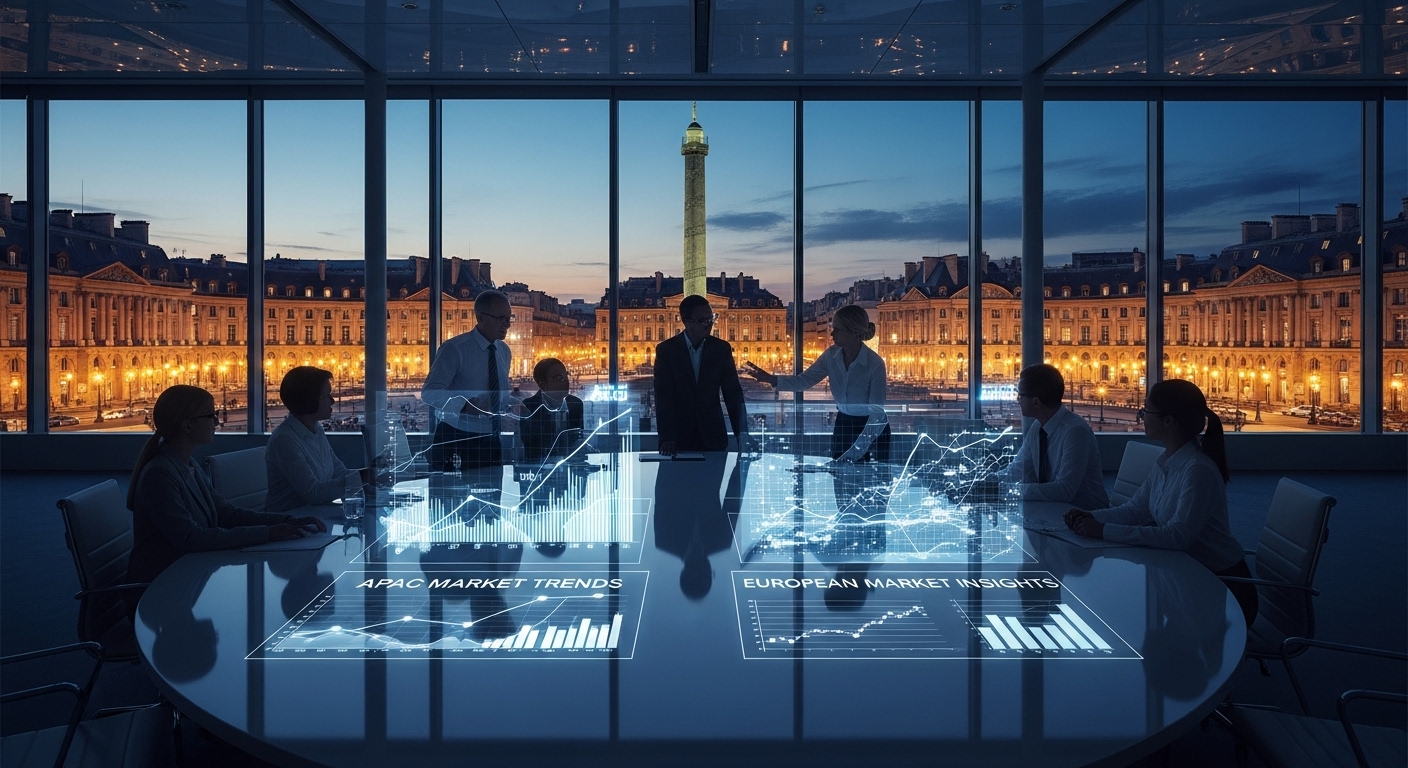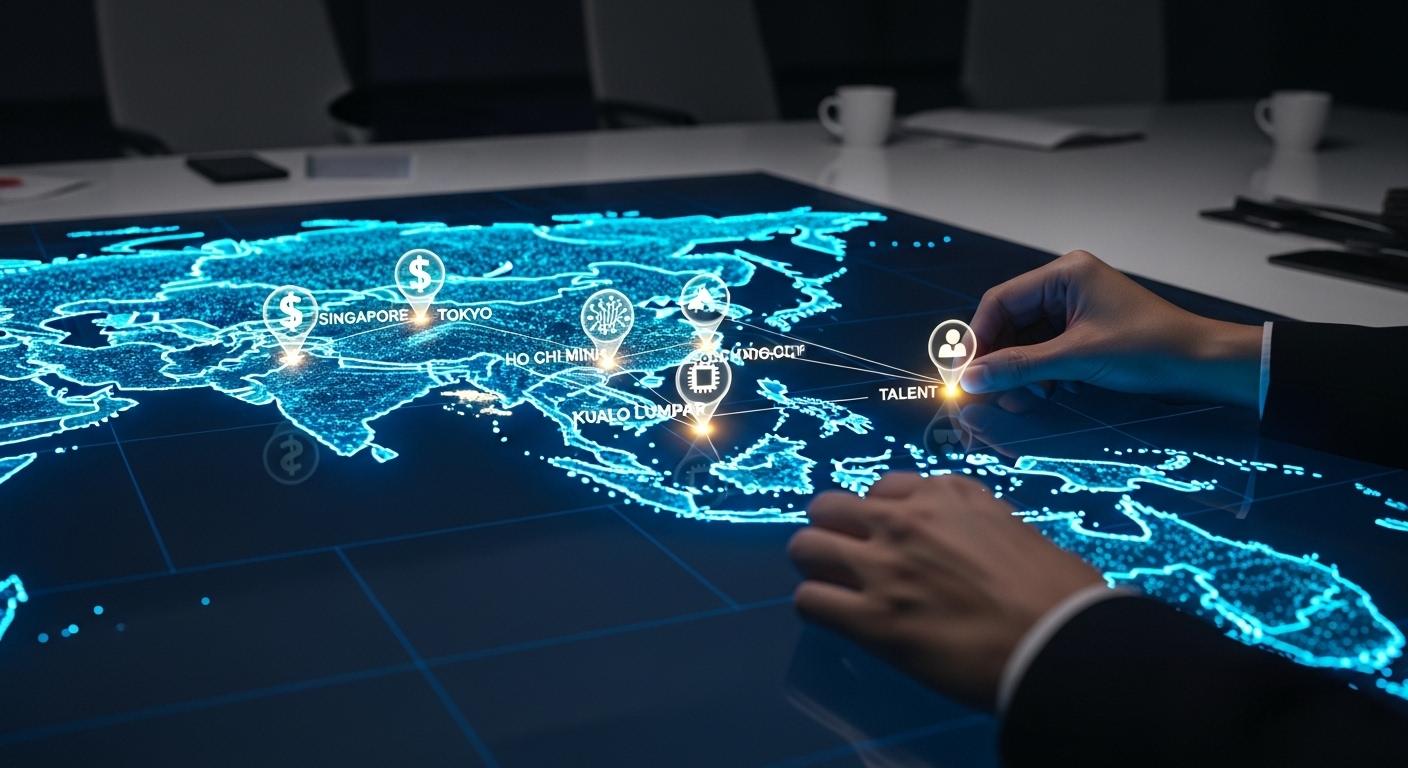In today’s interconnected economy, the question for ambitious enterprises is no longer where to expand, but how to build a resilient, globally integrated footprint. The meteoric rise of Asia-Pacific (APAC) hubs offers unparalleled growth, innovation, and market access, making the region an essential component of any international strategy. However, this dynamism comes with its own set of complexities and risks. Simultaneously, established European centers offer stability, regulatory predictability, and immense brand prestige. This creates a strategic dilemma: chase the explosive growth of the East or anchor in the established power of the West? The most sophisticated answer is not a choice, but a synthesis. This article explores a powerful dual-hub strategy, one that leverages the momentum of APAC while being anchored by the stability and brand equity of a European stronghold. We will delve into how a strategic base, particularly in a location with the historical and commercial weight of Paris 1st, can serve as the perfect complement to an aggressive Asia-Pacific expansion, creating a balanced and formidable global presence.
Understanding the APAC Momentum: The Engine of Global Growth
The Asia-Pacific region is not just a market; it’s the world’s primary engine of economic growth. Powerhouse economies like China, Japan, South Korea, and India, along with dynamic hubs such as Singapore, Sydney, and Seoul, create a landscape of immense opportunity. The region is home to over half the world’s population and a rapidly expanding middle class with voracious consumer demand. For technology, manufacturing, and digital services, APAC is the epicenter of innovation and scale. Cities like Shenzhen have become synonymous with hardware innovation, while Bangalore drives software development and Singapore stands as a global financial and logistics linchpin. Investing in an APAC presence provides access to vast, cost-effective talent pools, cutting-edge supply chains, and a front-row seat to the future of consumer trends. However, this velocity comes with volatility. The region is a complex mosaic of diverse cultures, languages, and regulatory frameworks. Navigating this requires significant local expertise and an appetite for risk. Geopolitical tensions and rapid market shifts can create an unpredictable environment, making a singular reliance on the region a potentially precarious strategy for a global enterprise. The reward is undeniable, but it must be balanced with a framework that ensures long-term stability and resilience.
The European Anchor: Stability, Prestige, and Market Access
In contrast to the high-octane environment of APAC, Europe offers a different, yet equally valuable, proposition: stability. The European Union represents one of the largest single markets in the world, characterized by regulatory harmony, strong legal protections, and a mature consumer base with high disposable income. For companies operating globally, this predictability is a powerful asset. It simplifies compliance, de-risks financial operations, and provides a stable foundation from which to manage more volatile market entries elsewhere. Beyond the functional benefits, Europe offers unparalleled brand prestige. An address in a key European capital sends a powerful message of permanence, quality, and global stature. This is particularly true in centers that are synonymous with culture, finance, and luxury. Establishing a corporate anchor in a district like Paris 1st does more than just provide office space; it embeds a company within an ecosystem of global finance, high fashion, and diplomatic influence. This association with heritage and excellence can elevate a brand’s perception worldwide, creating a halo effect that enhances its appeal even in the fast-growing markets of Asia.
The Dual-Hub Strategy: Mitigating Risk and Maximizing Opportunity
The most resilient global companies of the future will not be centered in one region but will operate as a distributed network of strategic hubs. The dual-hub strategy, pairing an operational focus in APAC with a strategic anchor in Europe, is a masterclass in this new paradigm. This polycentric model allows a business to capture the best of both worlds. The APAC hub can focus on growth, production, and tapping into regional innovation, moving with the speed and agility the market demands. Meanwhile, the European hub acts as a stabilizing counterweight. It can house global governance, long-term brand strategy, and central finance functions in a predictable environment. This diversification inherently mitigates risk. A supply chain disruption in Asia can be managed from a stable European base. A sudden regulatory shift in one APAC country doesn’t jeopardize the entire corporate structure. This model also creates a powerful synergy for talent and capital flow, allowing for the cross-pollination of ideas and expertise between vastly different, but complementary, business cultures. It transforms the company from a centralized entity with foreign outposts into a truly global organism, with vital organs in the world’s most important economic zones.
Talent and Innovation: Contrasting and Complementary Ecosystems
A dual-hub strategy provides access to two distinct but complementary talent and innovation ecosystems. The Asia-Pacific region boasts an enormous pool of highly skilled STEM graduates, engineers, and digital natives who are driving the next wave of technological disruption. The innovation culture is often characterized by speed, rapid prototyping, and a focus on scaling solutions for massive user bases. This is the ideal environment for product development, manufacturing, and operational execution. In contrast, Europe, and Paris specifically, excels in a different kind of talent. The city is a magnet for professionals in luxury brand management, creative design, strategic marketing, and high finance. The innovation here is often rooted in deep research, meticulous craftsmanship, and creating high-value, premium experiences. A company with hubs in both regions can engineer a powerful innovation pipeline: leveraging Parisian design and brand strategy to conceive a product, utilizing APAC’s engineering talent to build and scale it efficiently, and then marketing it globally with a message refined by both cultural perspectives. This fusion creates a competitive advantage that is difficult for regionally-focused competitors to replicate, allowing for the creation of products and services that are both technologically advanced and culturally resonant on a global scale.
Navigating Regulatory and Cultural Headwinds with a Stable Base
One of the most significant challenges of APAC expansion is navigating the labyrinthine web of legal, regulatory, and cultural landscapes. Each country has its own laws regarding data privacy, intellectual property, labor, and finance, creating a heavy compliance burden. A misstep in one jurisdiction can have cascading consequences. This is where a European anchor proves its strategic worth. By establishing a core administrative and legal center in a location governed by a transparent and established framework like EU law, companies can create a solid foundation for their global operations. The sophisticated legal and financial services available in a premier business district provide the expertise needed to manage cross-border complexities effectively. This stable base in a city like Paris 1st acts as a command center, ensuring that global compliance standards are met while allowing regional hubs the autonomy to adapt to local customs and market conditions. It provides the ‘steady hand on the tiller,’ giving the company the confidence to navigate the choppier waters of emerging markets without being overwhelmed by their complexity. This structure provides both global consistency and local flexibility, a key combination for sustainable international growth.
The Brand Synergy: How Parisian Prestige Amplifies Global Reach
Ultimately, a brand’s value is built on perception. While operational efficiency and market share are critical, the intangible asset of brand equity is what creates lasting enterprise value. A dual-hub strategy offers a unique opportunity to build a multifaceted brand identity. The APAC hub can cultivate an image of innovation, speed, and modernity. The European hub, particularly one in Paris, contributes an aura of sophistication, heritage, and uncompromising quality. This combination is incredibly powerful, especially when targeting aspirational consumer classes across the globe. An Asian consumer may be drawn to the technology developed in the APAC hub, but their perception of its quality and luxury status is amplified by its association with a Parisian headquarters. The European anchor serves as the guardian of the brand’s core identity and narrative. From this prestigious base, global marketing strategies can be developed and deployed, ensuring a consistent and elevated message across all markets. This isn’t just about a mailing address; it’s about strategically positioning the company’s identity at the crossroads of global culture and commerce, creating a brand that is perceived as both forward-thinking and timeless.
Conclusion: Architecting a Resilient Global Future
The debate over Asia-Pacific versus Europe is based on a false premise. The optimal strategy for the modern global enterprise is not an ‘either/or’ choice but a sophisticated ‘both/and’ integration. The dynamic, high-growth engine of APAC is essential for scale and innovation, while the stability, prestige, and market maturity of Europe provide the necessary foundation for resilience and long-term brand building. By thoughtfully architecting a dual-hub footprint, companies can de-risk their international operations, access diverse and complementary talent pools, and create a powerful brand synergy that resonates in every market. A strategic anchor in a location like Paris 1st provides more than just a foothold in Europe; it offers a command center for global strategy, finance, and brand identity, perfectly balancing the operational agility of an APAC presence. This balanced, polycentric approach is no longer a luxury for the few but a necessity for any organization with ambitions to lead in the complex and interconnected global economy of the 21st century. It is the definitive blueprint for building a company that is not just successful, but enduring.





